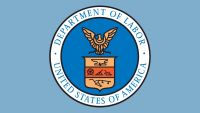Newly Revised Regulation: No-Match Letters
DHS issues supplemental proposed rule with employer guidance
On Wednesday, March 26th, the U.S. Department of Homeland Security (DHS) released a Supplemental Proposed Rulemaking for the No-Match Rule previously issued on August 15, 2007. This rulemaking addresses three issues cited in a decision of the U.S. District Court for the Northern District of California enjoining the August 2007 No-Match Rule.
Shortly after the decision, DHS asked the Court to suspend the litigation while it revised the rule so it would pass legal muster and address the concerns raised by the Court. Now, DHS states that it is reissuing the 2007 rule “without change.” The underlying harm of the policy remains the same: U.S. employers who are playing by the rules and abiding by the law are going to suffer the most. In addition, U.S. citizens and authorized workers will be fired and suffer adverse action because of errors in SSA’s inaccurate database. In no way is this rule any different from the rule issued in 2007, DHS has simply promulgated a Supplemental Rule making by providing a more detailed analysis of how the agency developed the No-Match policy and will help responsible employers ensure that they are not employing unauthorized workers.
Under the 2008 rule (as with the 2007 rule), DHS can use the receipt by an employer of a no-match letter as evidence that the employer has “constructive knowledge” that the employee who is the subject of the letter is unauthorized to work. The rule includes “safe harbor” procedures that such an employer should follow in order to avoid liability under the Immigration and Nationality Act. Although the rule will cause enormous upheavals in the workplace and in the economy, it will not resolve undocumented immigration which DHS claims it is trying to address through this rule.
Click here to review the rule in its entirety.
Why the DHS No-Match Rule Is Unreasonable
On March 24 2008, the U.S. Dept. of Homeland Security (DHS) released a supplemental proposed rule that purports to clarify its August 2007 final rule regarding an employer’s legal obligations upon receiving a letter from the Social Security Administration (SSA) stating that the information submitted for an employee does not match SSA records (otherwise known as an SSA “no-match” letter). Implementation of the August 2007 rule was preliminarily enjoined by the United States District Court for the Northern District of California on October 10, 2007. Shortly after the decision, DHS asked the Court to suspend the litigation while it revised the rule so it would pass legal muster and address the concerns raised by the Court. Now, DHS states that it is reissuing the 2007 rule “without change.” The underlying harm of the policy remains the same: U.S. citizens and authorized workers will be fired and suffer adverse action because of errors in SSA’s inaccurate database.Under the 2008 rule (as with the 2007 rule), DHS can use the receipt by an employer of a no-match letter as evidence that the employer has “constructive knowledge” that the employee who is the subject of the letter is unauthorized to work. The rule includes “safe harbor” procedures that such an employer should follow in order to avoid liability under the Immigration and Nationality Act. Although the rule will cause enormous upheavals in the workplace and in the economy, it will not resolve undocumented immigration which DHS claims it is trying to address through this rule.
The public will now have 30 days to comment on the rule.
The rule is bad for the economy and will cause massive layoffs of employment-authorized workers and U.S. citizens.
The purpose of the SSA no-match letter is to help workers get credit for their earnings, which can affect their retirement, survivor, disability, or other benefits administered by SSA in the future. There are many factors that may trigger a no-match letter, including misspelled names, name changes, and database errors.
Because many employers mistakenly assume that the letter provides information about the immigration status of the individual workers named in it, they immediately fire, lay-off, or demote such workers without giving them a chance to correct discrepancies
This is a bad time to enact policies that will cause massive layoffs in industries that likely will already be suffering due to the credit crunch and economic downturn.
The new rule hurts employers who play by the rules.
Most no-match letters are sent to industries where above-board employers compete with those who operate partially or fully off the books.
Employers who follow the new rule will feel the pain financially as they may have to fire some of their best workers who they have invested and trained for years. These same employers will bear the brunt of the unfair economic advantage that unscrupulous employers will have who will simply keep undocumented workers off the books.
This result will be that more employers go underground, reducing tax receipts and compliance with other laws.
The new rule emboldens unscrupulous employers to use the no-match letter as a tool to retaliate against workers.
Some bad actor employers have used no-match letters to selectively retaliate against immigrant workers when they try to organize a union or otherwise exercise their workplace rights (file complaints for unpaid wages, workers’ compensation, sexual harassment, discrimination, etc.). These employers initially ignore SSA no-match letters and then decided to use them as a pretext to fire workers who participated in efforts to improve working conditions and wages.
These unscrupulous employers will likely still ignore the no-match letters when it is convenient for them, but the new rule will now legitimize their adverse employment actions against workers because the employers will claim they are just following the law.
Other employers have also simply fired workers who receive no-match letters before giving them a chance to correct their records because they fear liability. Because foreign-born workers (both U.S. citizens and work authorized immigrants) are more likely to have erroneous information in SSA’s database, the rule will result in increased discrimination against these workers.
The no-match letter is ill-suited and ineffective for immigration enforcement.
SSA has stated for years that the no-match letter makes no statement regarding a worker’s immigration status. Nonetheless, DHS continues to try to make the no-match letter a notice about workers’ lacking employment authorization. SSA databases that generate no-match letters do not even contain complete or accurate information about workers’ immigration status. In fact, according to the Office of the Inspector General at SSA, a conservative estimate is that at least 3.3 million non-citizen records in SSA’s database contain incorrect citizenship status codes.
Many errors in its database that trigger no-match letters pertain to U.S. citizens.
According to the Office of the Inspector General at SSA, 17.8 million discrepancies in the SSA database that could result in a no-match letter, 12.7 million (or over 70 percent) pertain to native-born U.S. citizens.
The Government Accountability Office (GAO) testified before Congress that the SSA database that generates no-match letters contains “hundreds of millions of records, many unrelated to unauthorized work,” and that “in terms of poor earnings reporting, its focus is not on unauthorized workers.”
About the Author
Jessica Johnson Bennett was the Director of Government Affairs for MCAA. She has an extensive background in public affairs and government relations. Her expertise in strategic planning, PAC management and operations help on key policy issues.


















